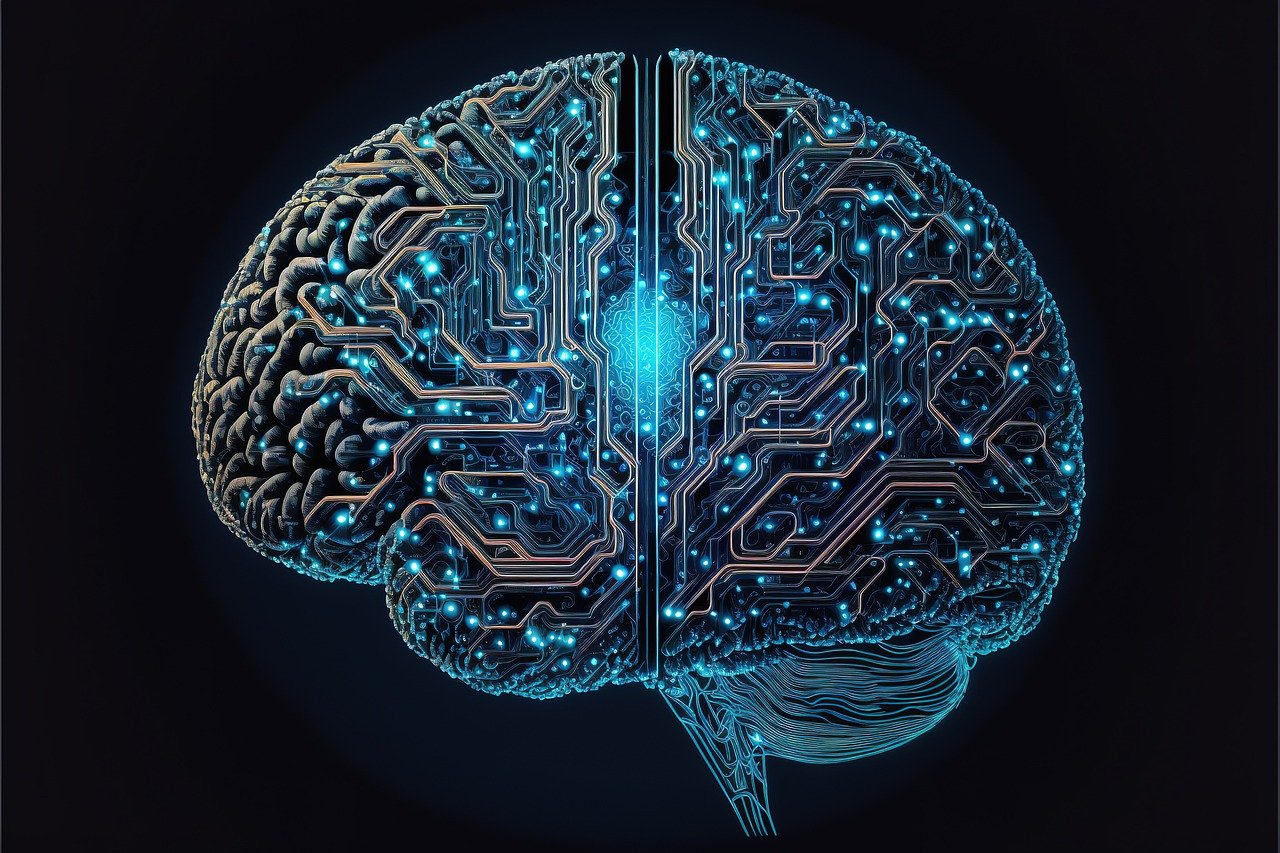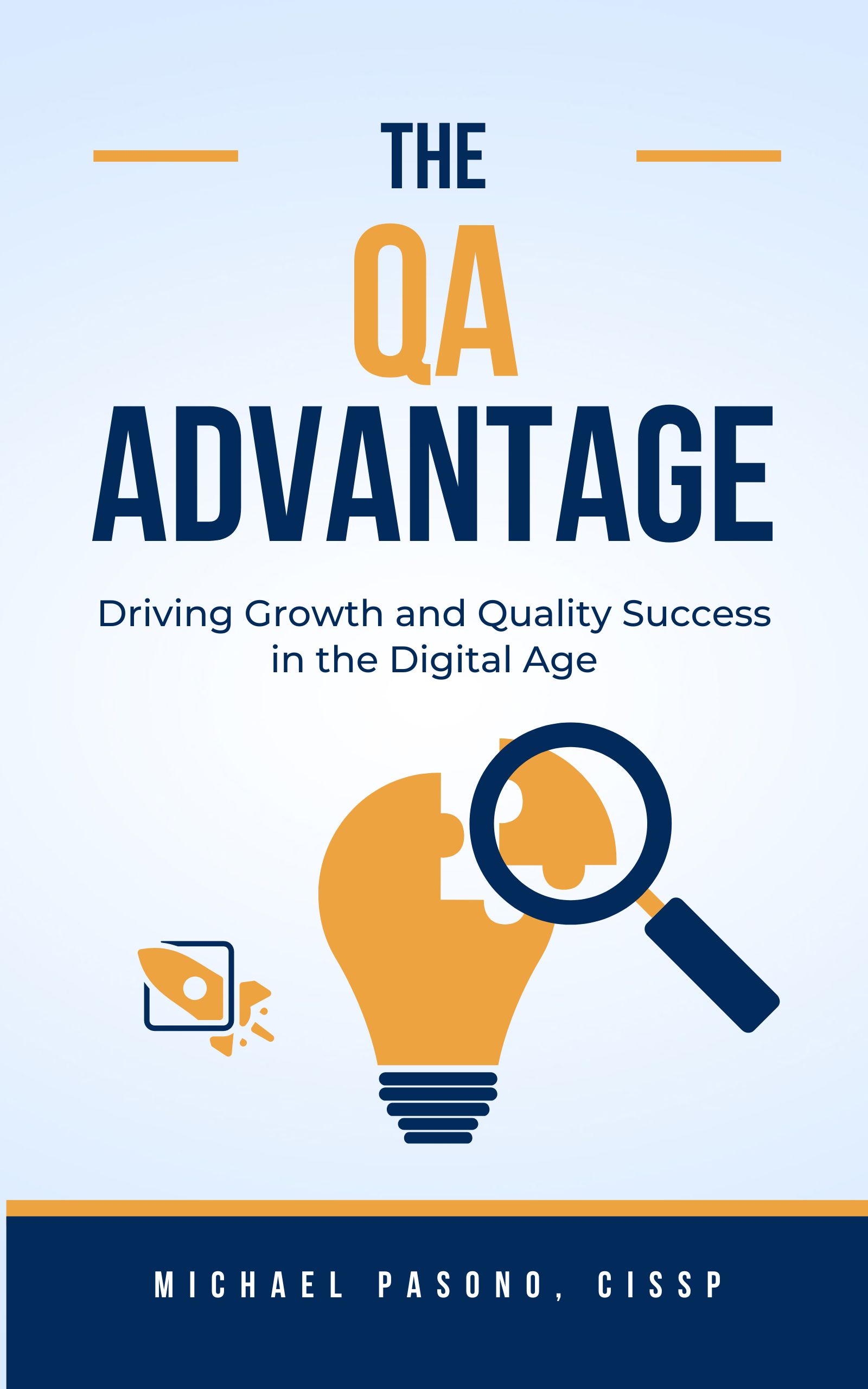Introduction
Artificial Intelligence (AI) is a rapidly growing field that has the potential to revolutionize the way we live and work. However, with great power comes great responsibility, and it is important to ensure that AI systems are reliable, trustworthy, and safe. Testing is an essential part of the development process for any AI system, and in this ultimate quick start guide, we will explore the various approaches, techniques, and tools that can be used to test AI. This article will go over AI Testing Best Practices in detail.
Table of Contents
- Chapter 1: Understanding AI Testing
- Chapter 2: Test Planning and Preparation
- Chapter 3: Functional Testing
- Chapter 4: Performance Testing
- Chapter 5: Security Testing
- Chapter 6: Best Practices for AI Testing
- Future of AI Testing
- How ApplyQA can help
Chapter 1: Understanding AI Testing (AI Testing Best Practices)
In this chapter, we will define what AI testing is and why it is important. We will also explore the challenges associated with testing AI systems and how they differ from traditional software testing. Finally, we will provide an overview of the different types of AI testing, including functional testing, performance testing, and security testing.
Chapter 1: Understanding AI Testing
Artificial Intelligence (AI) is a rapidly growing field that has the potential to transform the way we live and work. From voice assistants to autonomous vehicles, AI systems are becoming increasingly integrated into our daily lives. However, with great power comes great responsibility, and it is important to ensure that AI systems are reliable, trustworthy, and safe. Testing is an essential part of the development process for any AI system. We will explore the various approaches, techniques, and tools that can be used to test AI.
What is AI Testing?
AI testing is the process of verifying that an AI system meets its functional, performance, and security requirements. It involves a range of activities, including developing test plans, designing test cases, executing tests, and analyzing test results. The goal of AI testing is to ensure that the system is effective, efficient, and accurate in its decision-making and that it operates in a safe and secure manner.
Why is AI Testing Important?
Testing is critical for ensuring that AI systems are reliable and trustworthy. AI systems often make decisions that can have significant impacts on people’s lives, such as autonomous vehicles making driving decisions or medical AI systems making diagnoses. If these systems are not thoroughly tested, they could make incorrect decisions that could result in serious consequences. Furthermore, testing is necessary to ensure that AI systems operate within legal and ethical boundaries, such as complying with data privacy laws and avoiding biases that could result in unfair outcomes.
Challenges of AI Testing
Testing AI systems presents unique challenges that differ from traditional software testing. One of the primary challenges is that AI systems are often complex and difficult to understand. The algorithms used in AI systems are often opaque, and it can be difficult to determine why the system is making certain decisions. This can make it challenging to design effective test cases and evaluate the accuracy of the system’s output.
Another challenge is the lack of standardized testing frameworks and tools. Unlike traditional software testing, where there are well-established testing methodologies and tools, AI testing is still a relatively new field, and there is no consensus on the best approach to testing AI systems. This makes it difficult for developers and testers to know where to start and how to ensure that they are covering all necessary testing requirements.
Types of AI Testing
There are several types of AI testing, including functional testing, performance testing, and security testing. Functional testing involves verifying that the system performs its intended functions correctly. Performance testing involves evaluating the system’s performance under various conditions, such as high load or stress. Security testing involves evaluating the system’s ability to protect against unauthorized access and other security threats.
Chapter 1 Conclusion
In conclusion, AI testing is a critical component of any AI development process. Testing is necessary to ensure that AI systems are reliable, trustworthy, and safe. Testing AI systems presents unique challenges, but by understanding the different types of testing and the approaches, techniques, and tools used in AI testing, developers and testers can help ensure that AI systems are effective and responsible.
Chapter 2: Test Planning and Preparation (AI Testing Best Practices)
Before testing an AI system, it is important to develop a comprehensive test plan. This chapter will explore the steps involved in test planning, including identifying test objectives, defining test cases, and selecting appropriate testing tools and techniques. We will also discuss how to prepare test data and create test environments that accurately simulate real-world conditions.
Chapter 2: Approaches to AI Testing
In chapter 1, we discussed the importance of AI testing and the challenges that it presents. We will explore some of the different approaches that can be used to test AI systems.
Unit Testing
Unit testing is a common approach used in software development, and it involves testing individual units of code in isolation to ensure that they function correctly. In the context of AI systems, unit testing involves testing individual algorithms or modules within the system. Unit testing is useful for identifying bugs and errors early in the development process, which can save time and reduce costs.
Integration Testing
Integration testing involves testing how different modules or components of a system interact with each other. In the context of AI systems, integration testing involves testing how different algorithms or models within the system work together. Integration testing can help identify errors or bugs that arise from the interaction between different components.
System Testing
System testing involves testing the entire AI system as a whole to ensure that it meets its functional, performance, and security requirements. It can involve testing the system under various conditions, such as high load or stress. Also involves testing the system’s ability to handle edge cases or unexpected inputs.
Regression Testing
Regression testing involves retesting the system after changes have been made to ensure that the changes did not introduce any new bugs or errors. In the context of AI systems, regression testing is important because changes to the system, such as updates to algorithms or models, can have unintended consequences on the system’s output. Regression testing can help ensure that the system continues to function correctly after changes have been made.
Black Box Testing
Black box testing involves testing the system without knowledge of its internal workings. This approach is useful for testing the system from a user’s perspective and evaluating its output without being influenced by knowledge of how the system works internally. Black box testing can help identify issues with the system’s output or behavior that may not be apparent from examining the system’s code or algorithms.
White Box Testing
White box testing involves testing the system with knowledge of its internal workings. This approach is useful for identifying bugs or errors in specific algorithms or modules within the system. White box testing can also be used to ensure that the system is operating within legal and ethical boundaries, such as avoiding biases or complying with data privacy laws.
Chapter 2 Conclusion
In conclusion, there are several approaches that can be used to test AI systems, including unit testing, integration testing, system testing, regression testing, black box testing, and white box testing. Each approach has its strengths and weaknesses, and it is important to choose the approach that is best suited for the specific needs of the AI system being developed. By combining these approaches, developers and testers can help ensure that AI systems are reliable, trustworthy, and safe.
Chapter 3: Functional Testing (AI Testing Best Practices)
Functional testing is the process of verifying that an AI system performs its intended functions correctly. In this chapter, we will explore the different approaches to functional testing, including black box testing, white box testing, and grey box testing. We will also discuss how to design effective test cases, automate testing, and ensure adequate test coverage.
Chapter 3: Best Practices for AI Testing
In chapter 2, we discussed different approaches to AI testing. In this chapter, we will explore best practices for AI testing to help ensure that AI systems are reliable, trustworthy, and safe.
Define Clear Testing Objectives
It is important to define clear testing objectives before beginning the testing process. These objectives should be aligned with the overall goals of the AI system and should be specific, measurable, achievable, relevant, and time-bound. Clear testing objectives help to guide the testing process and ensure that testing efforts are focused and effective.
Test with Real-World Data
AI systems are trained on data, and the performance of an AI system can vary depending on the quality and quantity of the data used to train it. Testing an AI system with real-world data can help identify issues that may arise when the system is used in real-world scenarios. Real-world data should include diverse inputs to ensure that the system is robust and can handle a variety of scenarios.
Test for Bias and Fairness
AI systems can perpetuate biases that exist in the data used to train them, leading to unfair or discriminatory outcomes. It is important to test AI systems for bias and fairness, using methods such as adversarial testing or statistical analysis. Testing for bias and fairness can help identify potential issues and ensure that the system is fair and inclusive.
Test for Robustness
AI systems can be vulnerable to attacks, such as adversarial attacks, that aim to manipulate the system’s output. Testing for robustness involves testing the system’s ability to handle attacks and unexpected inputs. Robustness testing can help identify vulnerabilities in the system and ensure that the system is secure.
Document Testing Processes and Results
Documenting testing processes and results is important for ensuring transparency and accountability. Testing documentation should include testing objectives, testing methods, test data, test results, and any issues or bugs that were identified during testing. Documentation can help ensure that testing is reproducible and can be used to validate the system’s performance.
Collaborate with Experts
Collaborating with experts, such as domain experts, ethicists, or security professionals, can provide valuable insights and ensure that the system is developed and tested in a responsible and ethical manner. Experts can provide guidance on testing methods, data selection, and identifying potential issues or biases. Collaborating with experts can help ensure that the system is trustworthy and aligned with legal and ethical requirements.
Chapter 3 Conclusion
In conclusion, AI testing is essential for ensuring that AI systems are reliable, trustworthy, and safe. Best practices for AI testing include defining clear testing objectives, testing with real-world data, testing for bias and fairness, testing for robustness, documenting testing processes and results, and collaborating with experts. By following these best practices, developers and testers can help ensure that AI systems are developed and tested in a responsible and ethical manner.
Chapter 4: Performance Testing (AI Testing Best Practices)
Performance testing is the process of evaluating an AI system’s performance under various conditions. In this chapter, we will explore the different types of performance testing, including load testing, stress testing, and endurance testing. We will also discuss how to measure performance metrics, interpret test results, and optimize system performance.
Chapter 4: Tools and Technologies for AI Testing
You will need to explore various tools and technologies that can be used to test AI systems effectively.
Data Generation Tools
AI systems rely heavily on data, and generating large volumes of data can be time-consuming and expensive. Data generation tools can help create synthetic data that resembles real-world data and can be used to test AI systems. These tools can be particularly useful for testing edge cases or scenarios that are difficult to replicate in the real world.
Model Debugging Tools
Debugging AI models can be challenging due to the complexity of the models and the vast amount of data that they process. Model debugging tools can help developers and testers identify and troubleshoot issues in AI models. These tools can help identify issues such as overfitting, underfitting, or incorrect output.
Test Automation Tools
Test automation tools can help automate testing processes and save time and effort. These tools can be used to automate repetitive testing tasks, such as regression testing, and can help increase the efficiency and accuracy of testing.
Explainability and Interpretability Tools
Explainability and interpretability tools can help understand how an AI system arrived at a particular decision or output. These tools can be particularly useful for AI systems used in critical applications, such as healthcare or finance, where the decision-making process must be transparent and understandable.
Performance Monitoring Tools
Performance monitoring tools can help monitor the performance of AI systems in real-time. These tools can be used to monitor the system’s response time, accuracy, and other key performance indicators. Performance monitoring tools can help identify issues and ensure that the system is performing as expected.
Security Testing Tools
AI systems can be vulnerable to security threats, such as hacking or malware attacks. Security testing tools can be used to identify and address security vulnerabilities in AI systems. These tools can help ensure that the system is secure and protect against potential attacks.
Chapter 4 Conclusion
In conclusion, there are various tools and technologies available for testing AI systems effectively. Data generation tools can help create synthetic data, while model debugging tools can help identify and troubleshoot issues in AI models. Test automation tools can automate testing processes, while explainability and interpretability tools can help understand the decision-making process of AI systems. Performance monitoring tools can help monitor the system’s performance, while security testing tools can help identify and address security vulnerabilities. By using these tools and technologies, developers and testers can ensure that AI systems are reliable, trustworthy, and safe.
Chapter 5: Security Testing (AI Testing Best Practices)
Security testing is the process of evaluating an AI system’s ability to protect against unauthorized access, data breaches, and other security threats. In this chapter, we will explore the different types of security testing, including penetration testing, vulnerability scanning, and risk assessment. We will also discuss how to identify potential security vulnerabilities, mitigate risks, and ensure compliance with regulatory standards.
Chapter 5: Challenges and Limitations of AI Testing
While AI testing is essential for ensuring that AI systems are reliable, trustworthy, and safe, there are several challenges and limitations associated with AI testing. In this chapter, we will explore some of these challenges and limitations.
Data Quality and Quantity
AI systems rely heavily on data, and the quality and quantity of the data used to train and test AI systems can significantly impact the system’s performance. Poor quality or insufficient data can result in biased or inaccurate output. It can also be challenging to generate enough data to test AI systems adequately, particularly for complex systems.
Complexity of AI Systems
AI systems can be complex, making it challenging to identify and troubleshoot issues. AI models can have numerous layers and parameters, making it difficult to understand how the system is making decisions. Debugging and testing complex AI systems can be time-consuming and challenging.
Lack of Standardized Testing Frameworks
Unlike traditional software testing, there are no widely accepted standardized testing frameworks for AI systems. This lack of standardization can make it challenging to compare and evaluate different AI systems. It can also be challenging to determine what constitutes acceptable performance for an AI system.
Ethics and Bias
AI systems can perpetuate biases and ethical issues that exist in the data used to train them. Testing for bias and ethics can be challenging, particularly as biases can be subtle and difficult to detect. Ethical concerns such as privacy, security, and discrimination can also be difficult to address and test for.
Adversarial Attacks
AI systems can be vulnerable to adversarial attacks, where an attacker manipulates the system’s input to produce incorrect output. Testing for adversarial attacks can be challenging, particularly as attackers can use sophisticated techniques to evade detection.
Chapter 5 Conclusion
In conclusion, AI testing faces several challenges and limitations, including data quality and quantity, the complexity of AI systems, lack of standardized testing frameworks, ethics and bias, and adversarial attacks. Addressing these challenges requires a multidisciplinary approach that involves experts from different fields, such as data science, software engineering, and ethics. By addressing these challenges, developers and testers can help ensure that AI systems are developed and tested in a responsible and ethical manner.
Chapter 6: Testing Ethical Considerations (AI Testing Best Practices)
As AI systems become increasingly integrated into our daily lives, it is important to consider the ethical implications of testing these systems. This chapter will explore some of the ethical considerations associated with AI testing, including bias and fairness, privacy and data protection, and transparency and accountability. We will also discuss how to incorporate ethical considerations into the testing process and ensure that AI systems are developed and tested in an ethical and responsible manner.
Chapter 6: Best Practices for AI Testing
In this chapter, we will explore some best practices for testing AI systems effectively.
Define Clear Testing Objectives
Before beginning AI testing, it is essential to define clear testing objectives. The objectives should be specific, measurable, achievable, relevant, and time-bound (SMART). This will help ensure that the testing is focused and aligned with the system’s goals and requirements.
Test Throughout the Development Lifecycle
AI testing should not be an afterthought. Testing should be integrated into the development lifecycle and conducted throughout the development process. This can help identify and address issues early, reducing the time and effort required for debugging and testing later on.
Use Diverse and Representative Data
AI systems can be biased or inaccurate if they are trained on insufficient or biased data. To ensure that the system is reliable and trustworthy, it is crucial to use diverse and representative data during training and testing. This can help identify potential biases and ensure that the system performs well across different scenarios.
Conduct Rigorous Testing
AI systems should be tested rigorously, using a range of testing techniques, such as unit testing, integration testing, functional testing, and performance testing. The testing should include both positive and negative scenarios to ensure that the system performs well in different situations.
Involve Multiple Stakeholders
AI systems can impact different stakeholders, such as end-users, developers, and regulators. To ensure that the system meets the needs of all stakeholders, it is essential to involve them in the testing process. This can help identify potential issues and ensure that the system meets the requirements of all stakeholders.
Use a Combination of Testing Approaches
AI systems can be complex, making it challenging to identify and troubleshoot issues. Using a combination of testing approaches, such as manual testing, automated testing, and exploratory testing, can help ensure that the system is thoroughly tested and issues are identified and addressed.
Document and Report Testing Results
Testing results should be documented and reported in a clear and concise manner. This can help stakeholders understand the testing process, identify issues, and track the system’s performance over time. Documentation can also serve as a reference for future testing and debugging.
Chapter 6 Conclusion
In conclusion, testing AI systems effectively requires a thorough and multidisciplinary approach. Defining clear testing objectives, testing throughout the development lifecycle, using diverse and representative data, conducting rigorous testing, involving multiple stakeholders, using a combination of testing approaches, and documenting and reporting testing results are some best practices for testing AI systems. By following these best practices, developers and testers can help ensure that AI systems are reliable, trustworthy, and safe.
Future Directions in AI Testing (AI Testing Best Practices)
AI is an evolving field, and as new technologies and approaches emerge, the testing landscape will continue to evolve as well. In this final chapter, we will explore some of the future directions in AI testing, including the use of machine learning for testing, the development of new testing frameworks and methodologies, and the increasing importance of interdisciplinary collaboration in AI testing.
Testing is a critical component of any AI development process, and it is essential to ensure that AI systems are reliable, trustworthy, and safe. By understanding the different approaches, techniques, and tools used in AI testing, developers and testers can help ensure that AI systems are effective and responsible. With ongoing innovation and collaboration, the future of AI testing is bright, and we can look forward to a world in which AI is developed and tested in an ethical and responsible manner.
How can Apply QA help me with AI (Artificial Intelligence)
Apply QA is an industry leader in quality engineering best practices, education, career mentoring, job board, and consulting. Please see each area below for how we can help.
Best Practices
Apply QA offers free blog posts on different quality engineering and software testing topics. You can view the blog here.
Educational Material
The owner of Apply QA has written many articles and books on Quality Assurance, Quality Engineering, and Software Testing over the years. Along with heavy focus on security, advanced technology testing such as cloud and AI. These books can be found here.
Career Mentoring
Apply QA recognizes that it helps to have a quality mentor to help elevate your quality engineering and software testing career. Mentoring services can be found here.
Job Board
Once you have acquired the skills to be a solid quality engineer or software tester, we have partnered with a job aggregator to pull together recent, relevant quality or software testing jobs. The job board can be found here.
Also, if you are a hiring manager looking for a “quality” testing candidate. We do offer sponsor listings on top, please contact us for more information on our low-cost pricing.
Consulting and Testing Services
Lastly, we can offer quick improvements by leveraging our existing expertise in many different areas.
Quality Engineering Improvement
Offering consulting and advisory services from setting up a quality engineering department to pinpoint areas of improvement for existing processes.
Penetration Testing Services
HackTestMe.com provides independent, cost-efficient packages to test the security of your product or service. If you are a company that needs to conduct this testing due to contractual or regulatory needs, or even curiosity, this is a great service.
Web Design Services
Offering web design and optimization services. Partner with us to produce a high-quality product.










